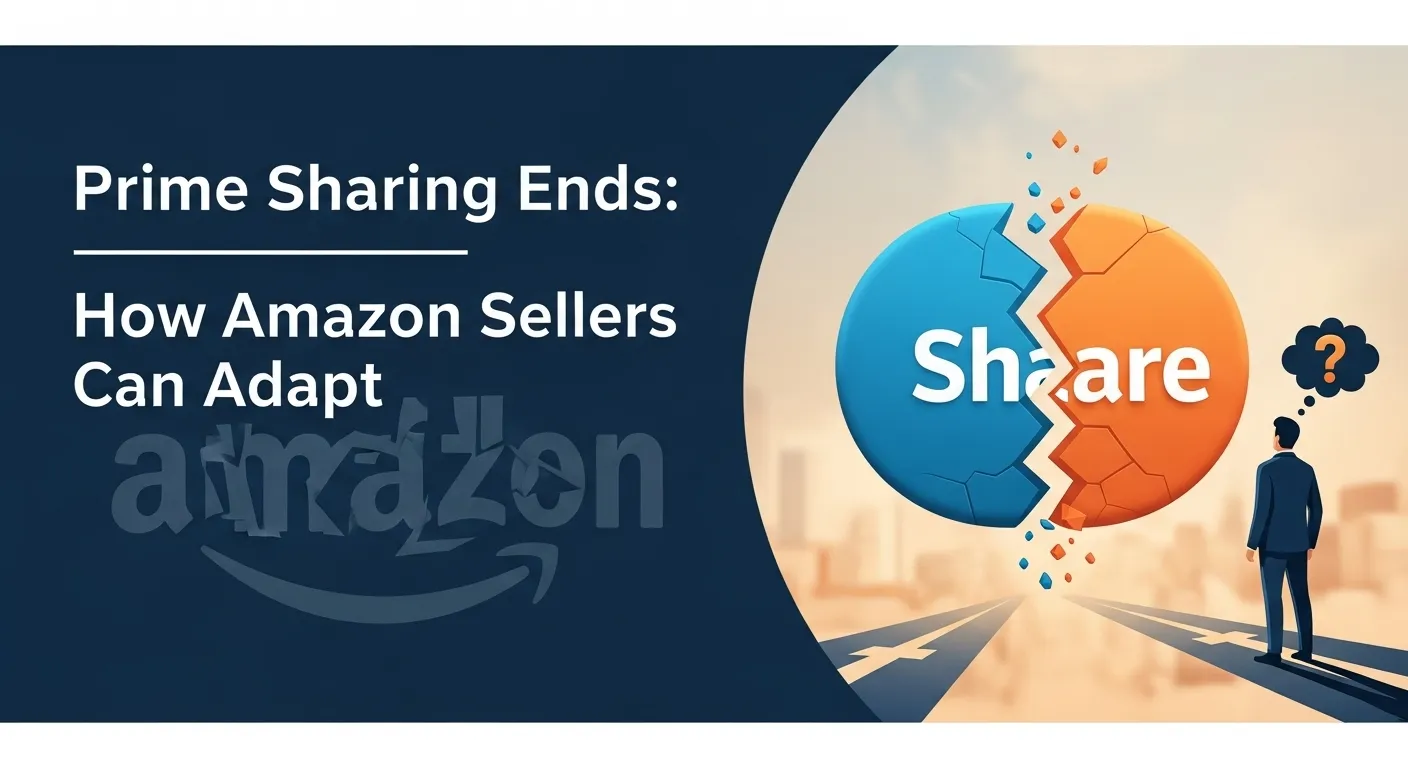Amazon FBA Fees Explained, How to Save FBA Fees-The Ultimate Guide to Amazon FBA Fees(2019 new edition)
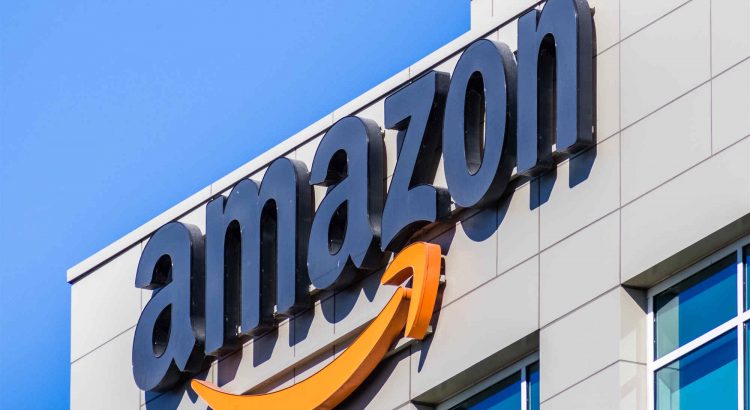
Compared with other e-commerce platforms, one of the biggest draws of Amazon is FBA (Fulfillment By Amazon) service. But how much do you know about FBA?
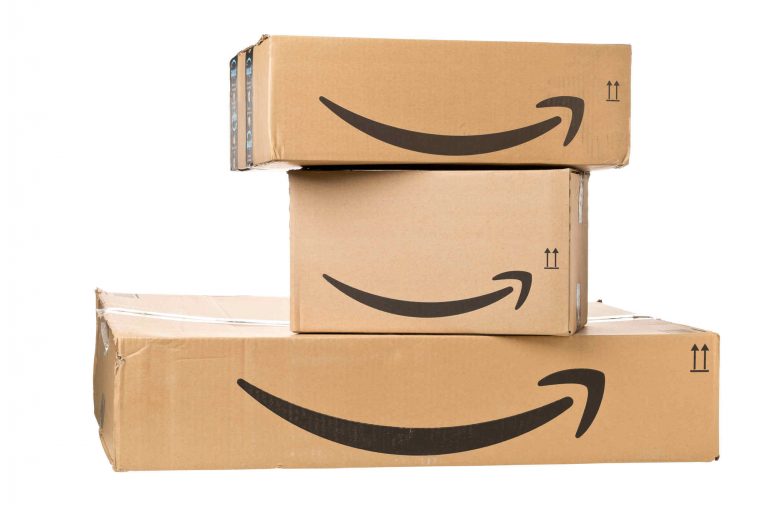
● What do the Amazon FBA fees include?
● What should be paid attention to after using FBA for beginners?
FBA, as we know, is a great way to reduce much hassle of managing fulfillment and distribution network. But you need to consider the cost factor when enlisting Amazon’s aid. FBA fees are surprisingly high, and the costs of selling on Amazon have been increasing in recent years.
However, quite many sellers don’t figure out the specific types of fees charged by FBA, and even get confused about how to claim from Amazon for the lost or damaged products. So, extra costs will inevitably arise. As a seller, we should take a holistic consideration of the operating costs. Only with a full understanding of Amazon FBA fees can we effectively control inventory and reduce costs.
Today, we are going to share a complete guide of FBA service with you, and to provide some tips on how to save FBA fees.
Don’t have time to calculate the FBA fee and product profits? Or do you want to Compare FBA with FBM so that you can choose a shipping method that suits you best? Check out our Excellent Free Amazon FBA profit calculator (2019 new edition)

First of all, we need to understand the concept of FBA and how to calculate FBA fees.
What is FBA?
FBA (Fulfillment by Amazon) means that sellers send inventory directly to an Amazon fulfillment center in the local marketplace. Once customers order their products, Amazon will handle the whole pick, pack, and ship process, and also provide customer service for these products.
FBA VS FBM?
| FBA | FBM | |
| Definition | With FBA (Fulfillment By Amazon), the seller sends inventory to Amazon warehouses, where Amazon is then responsible for picking, packing, and shipping products to customers according to their orders. | With FBM (Fulfilled By Merchant), sellers list their products on Amazon and assume complete responsibility for orders, including fulfillment (packing and shipping), and customer service. |
| Shipping costs | Combined the pick, pack and ship services into one, FBA offers a wide range of shipping methods and options. | Sellers can communicate with shoppers to select the most cost-effective shipping option. |
| Inventory storage fees | Amazon charges sellers to store inventory in their warehouses, that is, a monthly fee for each cubic foot of warehouse space used. But it’s not for sellers who are selling small volume products. | FBM sellers take more control over their inventory costs. |
| Purchase intention | More than half of the shoppers on Amazon only purchase FBA products. | They may lose most of their sales to FBA sellers. |
| Listing rankings | Small sellers tend to rank higher on Amazon listings so that their sales and exposure of products are improved. | Facing fierce competition. |
| Package | Some defects in packaging may appear, and only Amazon Logo can be labeled on the FBA package. A private label (logo) is not allowed. | Sellers have 100% control on packaging quality and can put the private logo on the package. |
| Prime member | Get free shipping on all FBA products | The free shipping discount is offered by FBM sellers. |
| After-sales service | Handled by Amazon | FBM sellers need to manage customer services. But they can build an email list of previous customers to maintain a relationship and remarket to them. |
| Customer returns | FBA accepts returns, regardless of whether the seller agrees with the buyer’s reasoning. | FBM sellers can decline returns request, or offer buyers with other compensations instead. |
| Alternatives | Amazon will list related alternatives from FBA products | No alternatives are available. |
| Customer trust | Under the FBA umbrella, sellers provide shoppers with a sense of trust and confidence that their items will be shipped in a timely and professional fashion. Thus, it helps sellers reach more shoppers and win their loyalty. | Create trust for customers by building brands. |
| Inventory | During peak seasons, sellers have shipped a large number of goods to Amazon’s FBA warehouses, but they may still face a dilemma that goods are temporarily out of stock. | Full control over inventory. |
Pros and Cons of FBA
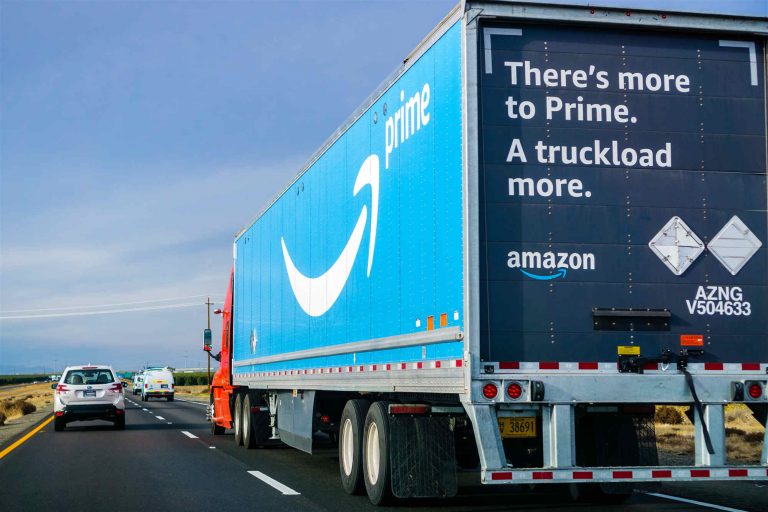
Pros
1.Drive more traffic to your store and improve conversion rates
Consumers tend to purchase items fulfilled by Amazon. Meanwhile, Amazon gives preference to FBA products that will get higher product rankings. If products are the same, but with different shipping methods, FBA will rank higher than FBM.
2. Efficient shipping
Consumers who are signed up for Prime can get free one- or two-day shipping for eligible items. The FBA warehousing and fulfillment centers are typically located close to airports. So, FBA can ship products quickly and efficiently to customers.
3. Unconditionally delete the negative reviews to help maintain good performance metric of store
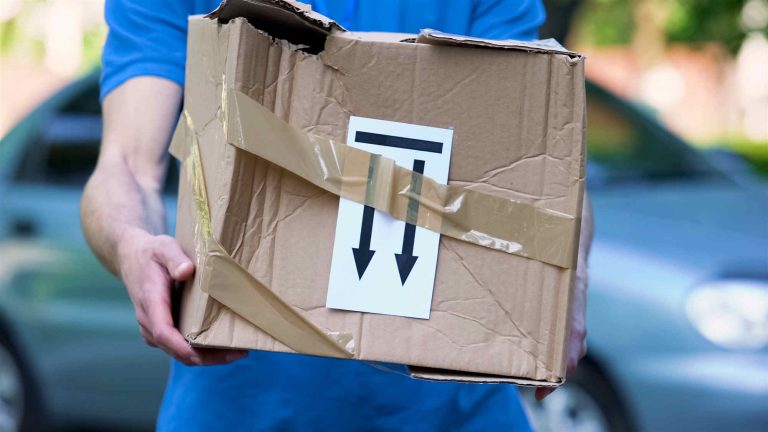
This is not a product review, but feedback relates explicitly to fulfillment and service for an order fulfilled by Amazon. Therefore, you do not have to worry about the poor performance on shipment that will affect your store ratings.
4. All FBA fees are exempted for products of standard size with unit price over $300.
That is to say, if your product is a small item of high value, an additional fulfillment fee will not be charged by Amazon.
5. 24×7 online customer service
Amazon offers 24×7 customer care service for buyers so that any problem or concern about the product can be solved in a timely manner. Besides, it can help sellers reduce the risk of receiving negative reviews.
Cons:
1. The comprehensive costs are high.
After comparing with all relevant costs to self-fulfillment, you will find that FBA fees run pretty high. Because you need to pay a series of costs such as Amazon storage fee.
2. Poor flexibility.
a. Sellers cannot contact customer service at any time. For example, if your account is abnormal, you can’t reach customer service immediately to help solve the problem. The only thing you can do is to leave your phone number via email, then wait for a callback, making sellers into a very passive state.
b. Buyers can request refunds and returns if they want. If buyers are not satisfied or there is any quality problem with the product, they can apply for a refund or return at any time.
3. Labels affect shipments.
It is known that the products are labeled with the Amazon logo if you opt for Amazon FBA. But if the labels are wrong or damaged, they will affect your sales operations, and the involved products cannot be stored in the warehouse.
What do the Amazon FBA fees include?
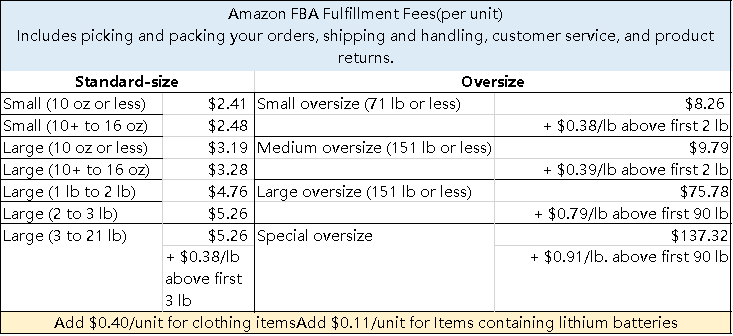
FBA fees include Storage fees, order handling fees, picking and packing fees, weigh handling fees, and other paid services.
1. FBA fees = (fulfillment fees) + (monthly storage fees) + (inventory placement service fees)
2. Fulfillment fees = (order handling fees) + (picking and packing fees) + (weigh handling fees)
3. Order handling fees are charged per unit.
4. Picking and packing fees and weigh handling fees are charged according to the size and weight of the goods.
5. Other costs mainly include labeling, transportation charges, removal and destruction of products, special packaging, etc.
Fulfillment fees
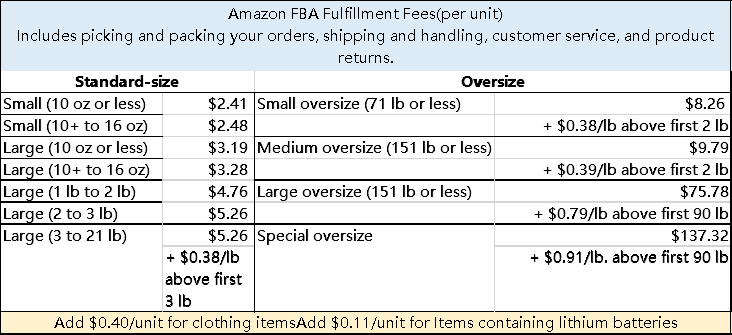
Monthly inventory storage fees
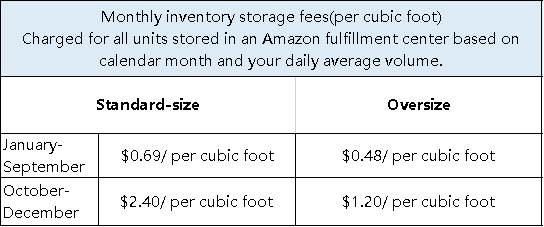
FBA or FBM? Let’s find out.
1. Which types of Amazon sellers should choose FBA?
● Small businesses and sellers who don’t fulfill their orders should choose FBA.
● Amazon is your main online selling platform, and using FBA can help you boost sales through Prime and Amazon’s global marketing ads.
● In addition to selling on Amazon, you are also running the business on other platforms such as eBay, Etsy. So, you can take full advantage of FBA to build multiple logistics channels. Amazon has expanded its FBA business, allowing sellers to use FBA on third-party platforms.
NOTE: FBM can’t generate the top-selling product, but FBA can do.
2. Which types of Amazon sellers should choose FBM?
● Sellers have control over all parts of fulfillment from packing to shipping.
● Sales are slow, or items are either bulky or heavy. Under this circumstance, you have to pay a large number of storage fees to FBA every year. Because FBA is charged by item weight and dimensions.
● Your store has low sales (such as selling less than 40 items a month).
● Product profits are less than 250%, so FBA fees could occupy a large proportion of your profits. It is better to choose FBM.
What should be paid attention to after using FBA for beginners?
It is believed that most sellers are willing to enroll in Amazon FBA, so as to let Amazon store, pack and ship their products to customers. Besides, the advantages of FBA are more conducive to the sellers who want to expand their business scale and enhance both domestic and international competitiveness. But what else should we pay attention to?
1. Inventory Management
You can’t take it for granted that Amazon handles everything for you. You need to keep a close eye on your inventory and replenish it as needed.
2.Amazon Categories Requiring Approval
Products in categories requiring approval can be listed only with specific permissions from Amazon. Only sellers with a Professional Selling Plan subscription can sell in these categories. If you sell on the categories requiring approval, it could possibly slow down the speed that you list items and even affect the overall sales.
3. Shipping Costs
In some cases, you are lucky enough to join the Amazon Free Shipping program. But most of the time, you need to pay for the shipping costs. This may increase your monthly costs by hundreds to thousands of dollars (depending on the volume of orders and the type of logistics service you use).
4. Returns and Damaged Products
Finally, you need to consider that some products may be damaged in transit or returned by customers. So, how to handle customer returns? What needs to be done to ensure customer satisfaction without affecting your ratings? Amazon may give you some advice, but it won’t take care of your store operations.
5. Weight
FBA is using infrared scanning for the goods into the warehouse, and the weight is also extremely accurate. So, sellers must be extra cautious about carton sealing before shipping, and the cartons must not exceed the standard weight limit of 50 lb.
How to save FBA fees?
Source of Goods
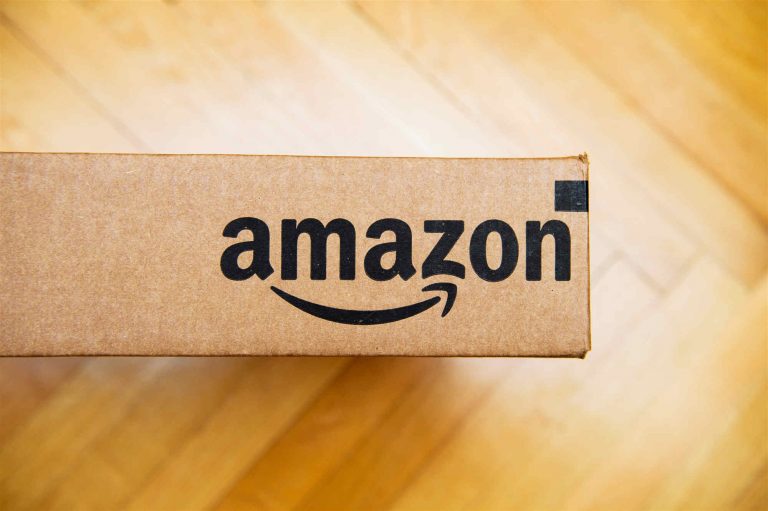
1. Product Research
Compared with relatively large and heavy products, small and light products have advantages in terms of shipping costs, delivery time, storage fees, etc., so we need to give full consideration when choosing products to sell on Amazon.
2. Inventory Replenishment
We should replenish inventory based on the average sales volume; besides, we should also determine ideal inventory levels through the combination with factors like stocking cycle, delivery time, sales velocity, etc. Avoid both overstocking and running out of the product.
Sales
Increasing product sales can save long-term storage fees while reducing redundant capital turnover.
At present, we are facing serious product infringement and homogenization on the market. It is necessary to make great efforts on product innovation and listing optimization.
External Promotion
Long-term External Promotions can help sellers clean up some of the inventory backlogs.
More detailed information about clearing inventory can be obtained in our Blog .
We hope that through the above methods, sellers can save more money and maximize profit margins in the process of using FBA.
About Tool4seller
A best-in-class Amazon seller tool that is specialized in sales& profits analytics, PPC optimization, keyword research, competitor tracking, instant alerts for listing hijacking, price changing, and inventory updates, etc.


